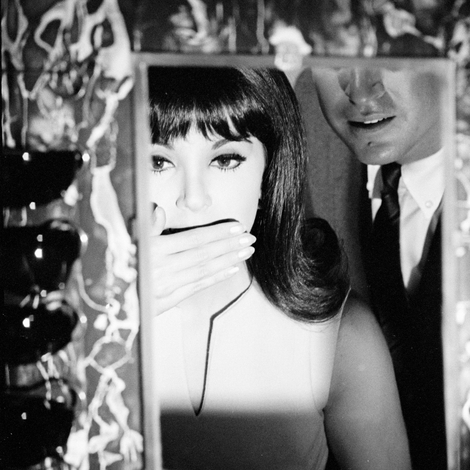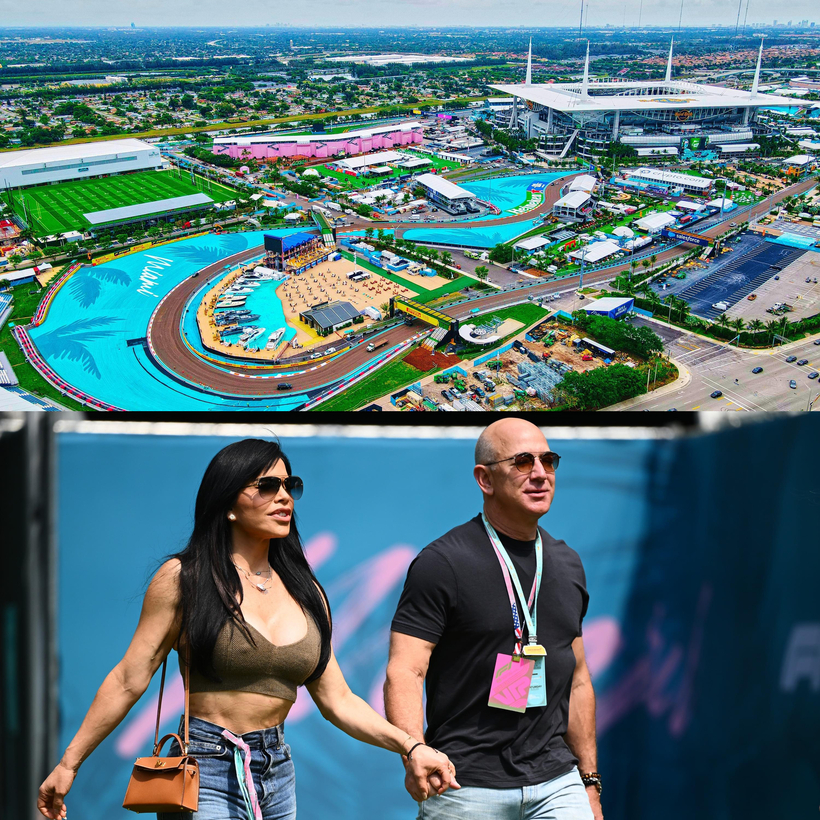The “Miami movement.” That’s what Francis Suarez, the mayor of Miami, calls his campaign to build a booming tech-and-crypto-currency sector in the city. Beyond its skyscrapers, the gleaming Atlantic is dotted with boats carrying not the cocaine cowboys of the 1970s but venture capitalists. And the jewel in the crown of this transformation, the event that best symbolizes the city’s journey from grim to bling, is the Formula One Miami Grand Prix, taking place next week from May 3 to May 5.
Considering Miami’s bubbling opulence and its desire to draw in a new generation of arrivistes, it makes sense that Formula One, the most popular motorsport in the world, would find a home here. While NASCAR racing has long been affiliated with southern Florida, Formula One brings an entirely different aesthetic along for the ride. Where two of NASCAR’s official partners are Busch Light and Geico, Formula One’s partners include Rolex and Qatar Airways. While NASCAR’s cars are made by Chevrolet and Ford, Formula One’s are manufactured by Ferrari and McLaren. Indeed, the third Miami Grand Prix is sponsored by Crypto.com, a partnership very much in line with the city’s nouveau tech identity (and indicative of the city’s selective memory: the Miami Heat’s basketball stadium was until recently sponsored by the doomed crypto-currency exchange FTX).

This year’s all-encompassing blowout will take place at the Hard Rock Stadium, in Miami Gardens, 17 miles north of downtown Miami. General-admission tickets are selling for $450 without access to grandstand seating, while “premium” options extend into the many thousands of dollars. For a three-day “Paddock Club” pass—Formula One’s flagship suite experience—expect to pay $10,000. Entry to luxury tents that double as nightclubs with bottle service can cost as much as $200,000. While for a mere $9,500, as the starting price, you can watch the race from a faux marina, in which real yachts are suspended on a sea of blue-tinted vinyl—the somewhat bizarre solution to the problem of the Grand Prix taking place 10 miles from Miami’s celebrated shoreline.
For those with even more money to burn, Bonhams Cars will be holding an auction of Bugattis, Ferraris, and Porsches on the Saturday night before the race—and don’t forget concessions: last year’s Hard Rock Beach Club listed a $450 crab cake (for four people) on its menu.
But these prices offer more than the sight of very fast cars driving around a winding track. They offer admission into a Narnia of money and star power. Jeff Bezos, Serena Williams, David Beckham, and Shakira have all attended the race in the past. Ed Sheeran is expected to play a concert at the track this year, and Marc Anthony, the best-selling tropical salsa singer of all time, will perform the national anthem.

The Miami Grand Prix is as much a festival as it is a sporting event. One 27-year-old former attendee, who spent $5,000 on his ticket, told me he was struck by the “parade-type party atmosphere” at the race, where a bustling crowd can be found perspiring on the stadium’s hot tarmac, dressed as if they were going to a nightclub. It was nothing like attending England’s historic Silverstone Circuit, where fans prefer to watch the racing rather than each other. Nevertheless, the event has paid dividends for both Formula One and the city of Miami. Last year’s race attracted 270,000 fans and reportedly boosted the local economy by $449 million.
For a mere $9,500, as the starting price, you can watch the race from a faux marina in which real yachts are suspended on a sea of blue-tinted vinyl.
Historically, American sports fans cared relatively little about Formula One. But after the American company Liberty Media purchased the Formula One Group, for $4.5 billion in 2017, the new ownership’s heroically mustached C.E.O., Chase Carey, immediately set out to establish F1 races in major U.S. cities. Knowing that American audiences weren’t familiar with Formula One’s storied European past, he realized he had to introduce them to the intricacies, narratives, and personalities of the sport.

A solution came in 2019 with Formula One: Drive to Survive, the hit documentary series co-produced by Formula One and Netflix, which over six seasons has familiarized viewers with the warring drivers, such as the current world champion, the Belgian and Dutch driver Max Verstappen, and the English driver Sir Lewis Hamilton, the winningest driver of all time. And it wasn’t just the drivers on-screen. Idiosyncratic team managers were also featured, most notably Red Bull’s domineering Christian Horner, who is married to former Spice Girl Geri Halliwell and who only a few months ago was embroiled in controversy after sexting a subordinate. (The employee was suspended; Horner never left the track.)
Following the show’s success, the U.S. market ripened, and when former Ferrari principal Stefano Domenicali took over as C.E.O. of the Formula One Group, in 2021, the Miami Grand Prix was officially announced.
Though Miami’s Mayor Suarez had outwardly backed a Formula One race in his district, an earlier 2019 proposal to build a racetrack in downtown Port Miami had crumbled after local groups and neighborhood associations railed against the chaos and cost of such a structure. So Formula One looked elsewhere, eventually settling on the gargantuan Hard Rock Stadium, home to the N.F.L.’s Miami Dolphins. A 19-corner circuit known as the Miami International Autodrome was erected around the stadium.
Though organizers and sponsors have made great efforts to hype the race—“Nowhere else in the world can you enjoy the pinnacle of auto sport combined with the highest caliber of luxury hospitality and the one-of-a-kind atmosphere of Miami,” says Tom Garfinkel, the C.E.O. of the Miami Dolphins—not everyone has bought into it. “You lose the vibe running it around a stadium car park,” says one Formula One insider, adding that the race is simply too far away from Downtown to really have a party atmosphere. He sees the Grand Prix as more of a trade show at which Formula One can brandish its glitz to investors and clients.

Some locals aren’t too happy either. When the rumors of a grand prix in Miami Gardens first circulated, the local city commission passed a resolution opposing it over concerns of noise pollution and traffic congestion. This might have stalled negotiations if the then Miami-Dade County mayor and the current Florida congressman Carlos Gimenez hadn’t vetoed the resolution. “It’s like having a Super Bowl every year,” he said at the time, a statement that soured after a 2020 ethics report revealed that Hard Rock Stadium’s principal owner, Stephen Ross, had given Gimenez $8,000 worth of tickets to Super Bowl LIV.
Residents of Miami Gardens fought on, filing a civil-rights suit against the Miami Grand Prix’s governing bodies, claiming that the pollution the race caused was an example of environmental racism and would disproportionately affect the city’s Black population. The case was thrown out of court in 2021 due to insufficient evidence.

Nevertheless, the first Miami Grand Prix went swimmingly. The inaugural race attracted an audience of 2.6 million, shattering the sport’s American viewership record. In 2018, ESPN had signed a $5-million-per-year deal with Formula One to broadcast the race for the next four years. By 2022, the audience had ballooned enough that ESPN signed a new three-year contract worth up to $90 million. Along with Miami and the United States Grand Prix, in Austin, Texas, a third race, in Las Vegas, was added to the calendar last year.
It’s rumored that Liberty Media is setting its sights on New York City for a fourth American grand prix. The usual fights with locals will undoubtedly take place. But, for some, the benefits of this magnet of money and power is a godsend. Mehall Ledwith, the general manager of Tootsie’s Cabaret Miami, allegedly the largest strip club in the world and a thong’s throw from Hard Rock Stadium, tells me the Miami Grand Prix has had an assuredly positive impact on his business.
Jack Sullivan is an Associate Editor at AIR MAIL


